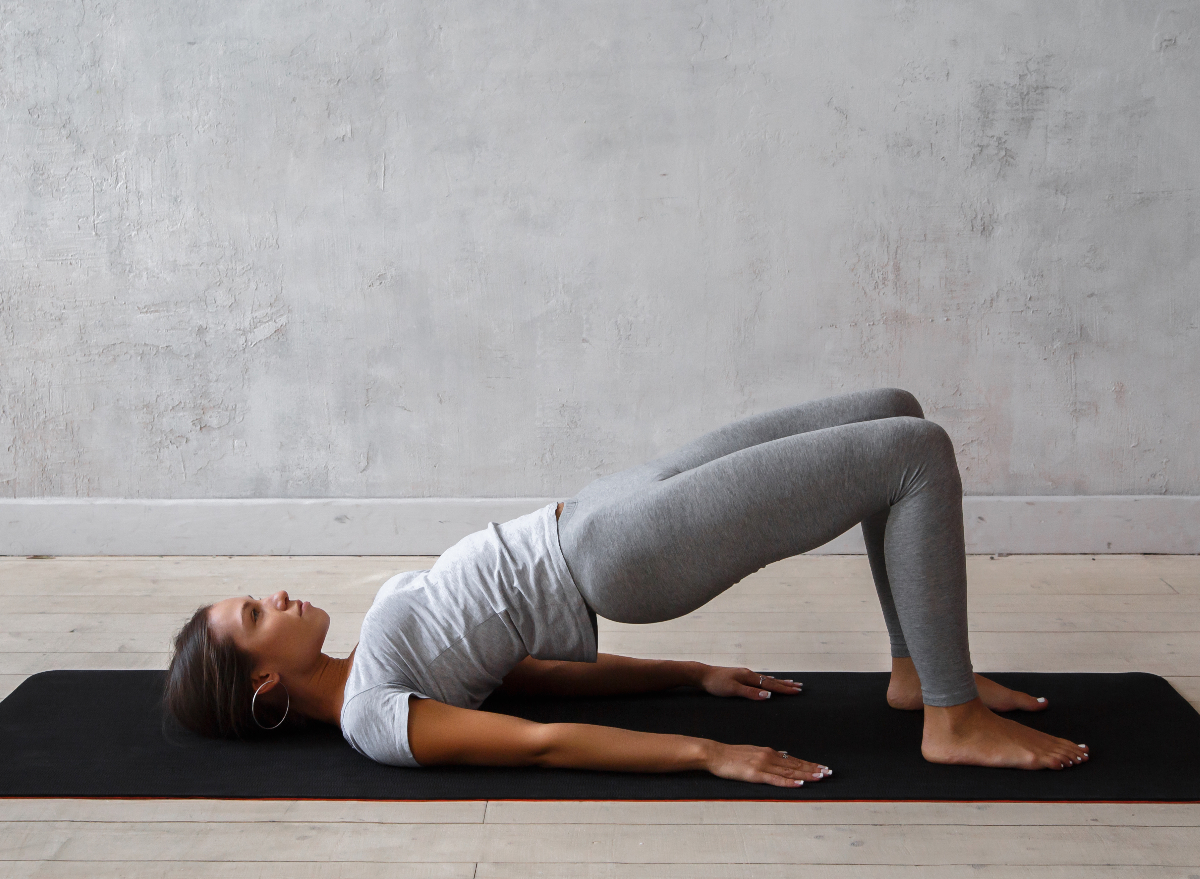Yoga for Manage Chronic Pain is a practice that has gained popularity globally for its potential benefits in managing chronic pain. By incorporating a combination of physical postures and breathing techniques, yoga offers individuals a holistic approach to pain management. Research, such as the systematic review and meta-analysis conducted by Cramer et al. in 2013, has shown promising results in using yoga as a complementary therapy for low back pain. As you consider incorporating yoga into your pain management plan, it’s important to understand how this ancient practice can help alleviate your symptoms.
Understanding the connection between yoga and pain relief

Yoga focuses on the mind-body connection, emphasizing the importance of mental and physical well-being. When dealing with chronic pain, this mind-body approach can be particularly beneficial as it addresses both the physical discomfort and the emotional toll that pain can take. Engaging in yoga can help improve flexibility, strengthen muscles, and promote relaxation, all of which can contribute to reducing pain levels over time. By learning to be mindful of your body and breath through yoga, you may discover new ways to manage your pain and improve your overall quality of life.
Movement-Related Aspects of Pain
Addressing tight muscles and stiff joints through yoga
When experiencing musculoskeletal pain, yoga can be a beneficial tool in addressing tight muscles and stiff joints. Through the practice of yoga postures, or asanas, individuals can gently stretch and lengthen muscles, promoting increased flexibility and mobility. This can help alleviate the discomfort associated with muscle tension and joint stiffness. By incorporating yoga into your routine, you may gradually notice improvements in your range of motion and reduced sensations of tightness in key areas of the body.
Releasing tension in the body with regular yoga practice
Regular yoga practice can also aid in releasing tension that may contribute to feelings of pain and discomfort. The focus on mindful breathing techniques and body awareness during yoga sessions can help individuals become more attuned to areas of tension and learn to release it consciously. This can lead to a greater sense of relaxation and ease in the body, potentially reducing the intensity of perceived pain. Over time, the practice of yoga may help individuals cultivate a greater sense of physical and mental well-being, contributing to an overall reduction in stress and tension levels.
Incorporating yoga into your pain management plan can offer a holistic approach to addressing movement-related aspects of pain. By engaging in regular practice and exploring different yoga styles and techniques, you may discover a new avenue for improving your physical well-being and enhancing your quality of life.
Emotional Aspects of Chronic Pain
Dealing with emotional aspects through meditation and pranayama
When managing chronic pain, it is essential to recognize the emotional toll it can take. Incorporating meditation and pranayama (breathwork) into your routine can be beneficial in addressing the emotional aspects of pain. These practices help in calming the mind, reducing stress, and promoting relaxation. By focusing on the present moment and engaging in deep, mindful breathing, individuals can cultivate a sense of inner peace and resilience in the face of pain. This can lead to a better understanding of one’s emotional responses to pain and the development of healthier coping strategies.
Reducing anxiety and depression with relaxing asanas
Practicing relaxing asanas, or yoga postures, can also play a significant role in reducing anxiety and depression associated with chronic pain. Certain poses are designed to release tension in the body, calm the nervous system, and promote feelings of well-being. By regularly incorporating these gentle and soothing postures into your practice, you may experience a decrease in anxiety levels and an improvement in mood. The combination of physical movement, breath awareness, and relaxation in yoga can create a harmonious environment for managing emotional distress related to chronic pain.
By incorporating meditation, pranayama, and relaxing yoga postures into your routine, you can address the emotional aspects of chronic pain in a holistic manner. These practices not only offer relief from emotional distress but also promote a sense of balance and inner strength. Over time, you may find that your ability to cope with pain improves, leading to a greater sense of overall well-being and emotional stability.
Physical and Emotional Benefits
Improving mood and immune system function with yoga
When you engage in regular yoga practice, you have the opportunity to improve your mood and boost your immune system function. Through the practice of yoga postures and mindful breathing techniques, you can experience a positive impact on your mental well-being. By focusing on the mind-body connection during yoga sessions, you may find yourself feeling more balanced and centered, leading to an overall enhancement in mood and emotional resilience. Additionally, research suggests that the relaxation response triggered by yoga can help regulate your immune system, potentially strengthening your body’s ability to fight off illnesses and maintain optimal health.
Transforming chronic pain responses into chronic healing responses
By integrating yoga into your pain management plan, you have the chance to transform chronic pain responses into chronic healing responses. The gentle stretching and mindful movement practiced in yoga can help shift your body’s response to pain from one of tension and discomfort to one of relaxation and healing. Through regular yoga practice, you can cultivate a greater awareness of your body’s signals and learn to respond to pain with compassion and self-care. This shift in mindset can lead to a reduction in the intensity and frequency of chronic pain episodes, allowing you to experience greater comfort and well-being in your daily life.
Incorporating yoga into your routine can offer a comprehensive approach to improving both physical and emotional aspects of your well-being. By embracing the practice of yoga and exploring its numerous benefits, you can empower yourself to take charge of your health and cultivate a more vibrant and fulfilling life.
The Science Behind Yoga and Chronic Pain
Research-backed evidence of yoga’s effectiveness in managing pain
When you engage in regular yoga practice, you have the opportunity to improve your mood and boost your immune system function. Through the practice of yoga postures and mindful breathing techniques, you can experience a positive impact on your mental well-being. By focusing on the mind-body connection during yoga sessions, you may find yourself feeling more balanced and centered, leading to an overall enhancement in mood and emotional resilience. Additionally, research suggests that the relaxation response triggered by yoga can help regulate your immune system, potentially strengthening your body’s ability to fight off illnesses and maintain optimal health.
Michele Hoffman’s insights on reducing suffering through yoga
By integrating yoga into your pain management plan, you have the chance to transform chronic pain responses into chronic healing responses. The gentle stretching and mindful movement practiced in yoga can help shift your body’s response to pain from one of tension and discomfort to one of relaxation and healing. Through regular yoga practice, you can cultivate a greater awareness of your body’s signals and learn to respond to pain with compassion and self-care. This shift in mindset can lead to a reduction in the intensity and frequency of chronic pain episodes, allowing you to experience greater comfort and well-being in your daily life.
Incorporating yoga into your routine can offer a comprehensive approach to improving both physical and emotional aspects of your well-being. By embracing the practice of yoga and exploring its numerous benefits, you can empower yourself to take charge of your health and cultivate a more vibrant and fulfilling life.
Personal Testimonials
Real-life experiences of individuals benefiting from yoga for chronic pain
When individuals commit to a regular yoga practice, they often find relief from chronic pain and experience a transformative journey towards healing. Many people have shared their stories of how incorporating yoga into their daily routine has helped them manage their pain more effectively. Through gentle movements, breath awareness, and mindfulness techniques, individuals have reported feeling a reduction in pain intensity and an increase in overall well-being. By listening to their bodies and cultivating a deeper mind-body connection through yoga, these individuals have found a sense of empowerment and control over their pain.
How yoga has helped people cope with long-term pain
For those living with long-term pain conditions, yoga has been a valuable tool in coping with the challenges they face on a daily basis. Through consistent practice, individuals have learned to transform their responses to pain into opportunities for healing and self-care. By embracing the holistic approach of yoga, incorporating physical postures, breathing exercises, and meditation, people have discovered a new way of relating to their pain. The practice of yoga has provided a safe space for individuals to explore their bodies, emotions, and thoughts, leading to a shift in mindset from one of suffering to one of acceptance and resilience. By integrating yoga into their lives, these individuals have found a path toward living with chronic pain in a more meaningful and fulfilling way.
Overcoming Challenges
Addressing common obstacles when using yoga for chronic pain
When you incorporate yoga into your routine to manage chronic pain, you may face some common obstacles that can hinder your progress. It is important to be aware of these challenges and find ways to overcome them. You might struggle with finding the time to practice regularly due to busy schedules or other commitments. In such cases, prioritizing self-care and setting aside dedicated time for yoga can help in establishing a consistent practice. Additionally, you may feel intimidated by the physical demands of yoga poses or the unfamiliarity of the practice. Starting with gentle movements and modifications tailored to your needs can make the practice more accessible and enjoyable.
Strategies for staying consistent with Yoga for Manage Chronic Pain
To ensure you maintain a consistent yoga practice for managing chronic pain, develop strategies that support your commitment to the practice. Set realistic goals and create a schedule that aligns with your daily routine to make it easier to incorporate yoga into your life. Finding a supportive community or joining yoga classes can also provide motivation and accountability. Listen to your body and adjust your practice based on how you are feeling on any given day. By cultivating self-awareness and being compassionate towards yourself, navigate the challenges of chronic pain with resilience and determination. Remember that each step you take towards your well-being through yoga is a step towards a more fulfilling and empowered life.
Conclusion
Embracing yoga as a gentle yet powerful tool for chronic pain management
Yoga offers a gentle yet powerful approach to managing chronic pain. By incorporating this ancient practice into your routine and addressing common obstacles, you can experience improvements in function, pain, and general well-being.
Encouragement to explore the transformative potential of yoga in pain relief
Exploring the transformative potential of yoga in pain relief can be a rewarding journey. With dedication, self-awareness, and support, you can harness the benefits of yoga to navigate the challenges of chronic pain and lead a more empowered life.
For More blogs visit Aerns

